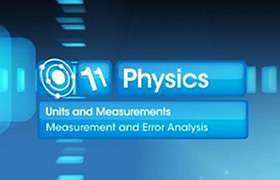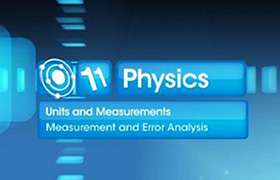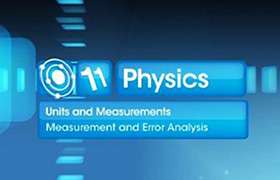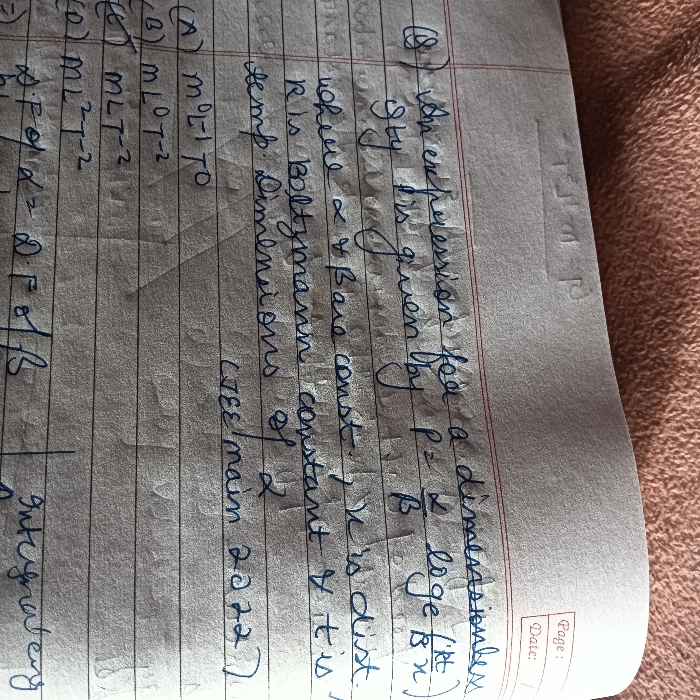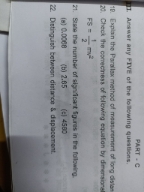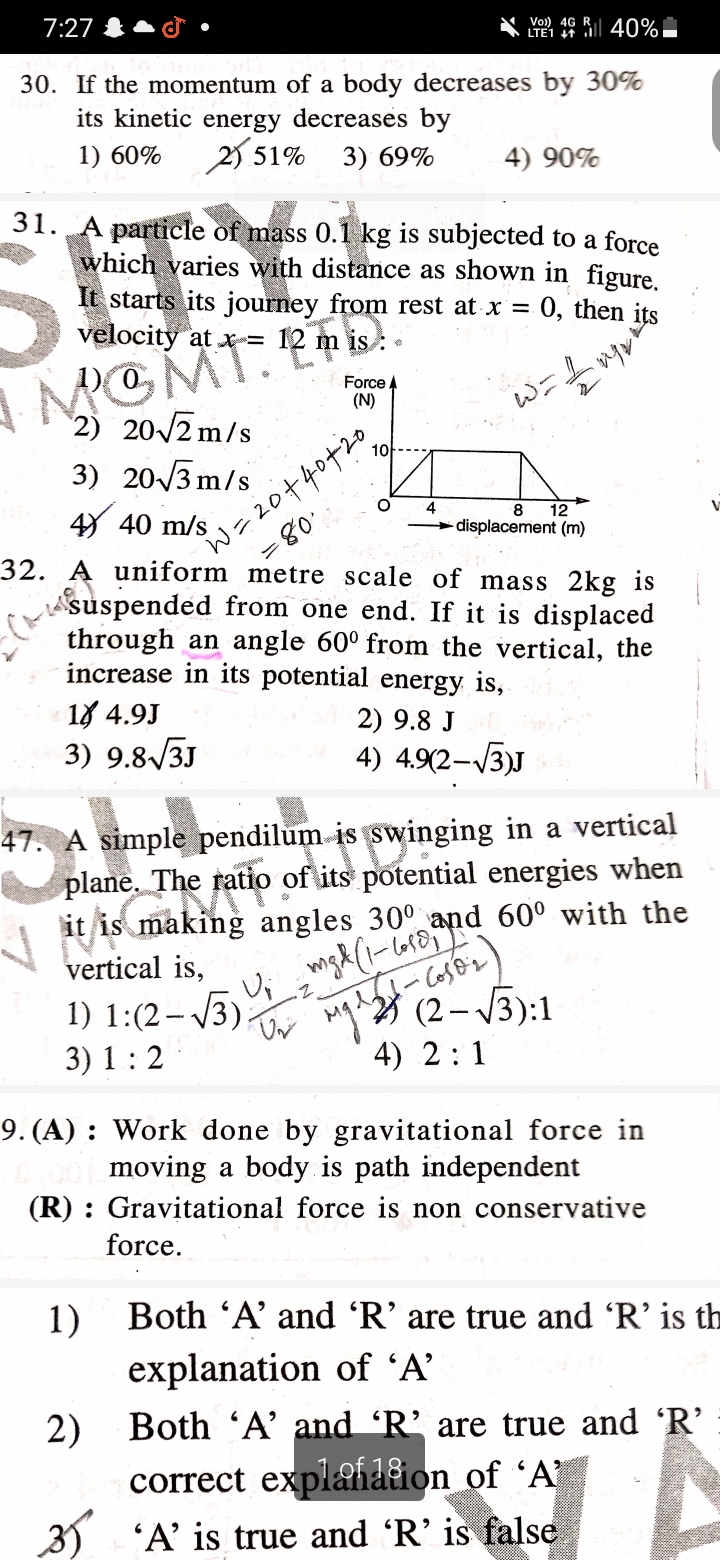CBSE Class 11-science Answered
Suppose two measured quantities x and y have uncertainties, Dx and Dy, determined by procedures described in previous sections: we would report (x ± Dx), and (y ± Dy). From the measured quantities a new quantity, z, is calculated from x and y. What is the uncertainty, Dz, in z? For the purposes of this course we will use a simplified version of the proper statistical treatment. The formulas for a full statistical treatment (using standard deviations) will also be given. The guiding principle in all cases is to consider the most pessimistic situation. Full explanations are covered in statistics courses.
The examples included in this section also show the proper rounding of answers, which is covered in more detail in Section 6. The examples use the propagation of errors using average deviations.
(a) Addition and Subtraction: z = x + y or z = x - y
-
Example: The radius of a circle is x = (3.0 ± 0.2) cm. Find the circumference and its uncertainty.
C = 2 p x = 18.850 cm
DC = 2 p Dx = 1.257 cm (The factors of 2 and p are exact)C = (18.8 ± 1.3) cm
We round the uncertainty to two figures since it starts with a 1, and round the answer to match.
Example: x = (2.0 ± 0.2) cm, y = (3.0 ± 0.6) cm. Find z = x - 2y and its uncertainty.
z = x - 2y = 2.0 - 2(3.0) = -4.0 cm Dz = Dx + 2 Dy = 0.2 + 1.2 = 1.4 cm
So z = (-4.0 ± 1.4) cm.
Using Eq 1b, z = (-4.0 ± 0.9) cm.
The 0 after the decimal point in 4.0 is significant and must be written in the answer. The uncertainty in this case starts with a 1 and is kept to two significant figures. (More on rounding in Section 7.)
| Derivation: We will assume that the uncertainties are arranged so as to make z as far from its true value as possible.
Average deviations Dz = |Dx| + |Dy| in both cases With more than two numbers added or subtracted we continue to add the uncertainties. |
| Using simpler average errors | Using standard deviations | ||
| Eq. 1a | Eq. 1b | ||
|
Example: w = (4.52 ± 0.02) cm, x = ( 2.0 ± 0.2) cm, y = (3.0 ± 0.6) cm. Find z = x + y - w and its uncertainty. z = x + y - w = 2.0 + 3.0 - 4.5 = 0.5 cm
Notice that we round the uncertainty to one significant figure and round the answer to match. |
| For multiplication by an exact number, multiply the uncertainty by the same exact number. |
(b) Multiplication and Division: z = x y or z = x/y
| Derivation: We can derive the relation for multiplication easily. Take the largest values for x and y, that is
z + Dz = (x + Dx)(y + Dy) = xy + x Dy + y Dx + Dx Dy Usually Dx << x and Dy << y so that the last term is much smaller than the other terms and can be neglected. Since z = xy, Dz = y Dx + x Dy which we write more compactly by forming the relative error, that is the ratio of Dz/z, namely |
The same rule holds for multiplication, division, or combinations, namely add all the relative errors to get the relative error in the result.
| Using simpler average errors | Using standard deviations | ||
| Eq. 2a |  |
Eq.2b | |
Example: w = (4.52 ± 0.02) cm, x = (2.0 ± 0.2) cm. Find z = w x and its uncertainty.
z = w x = (4.52) (2.0) = 9.04

So Dz = 0.1044 (9.04) = 0.944 which we round to 0.9
,
z = (9.0 ± 0.9).
Using Eq. 2b we get
Dz = 0.905and
z = (9.0 ± 0.9).
The uncertainty is rounded to one significant figure and the result is rounded to match. We write 9.0
rather than 9
since the 0 is significant.
Example: x = ( 2.0 ± 0.2) cm, y = (3.0 ± 0.6) sec Find z = x/y.
z = 2.0/3.0 = 0.6667 cm/s.
So Dz = 0.3 (0.6667 cm/sec) = 0.2 cm/sec
z = (0.7 ± 0.2) cm/secUsing Eq. 2b we get z = (0.67 ± 0.15) cm/sec Note that in this case we round off our answer to have no more decimal places than our uncertainty.
(c) Products of powers:
.
The results in this case are
Using simpler average errors Using standard deviations Eq. 3a Eq.3b
-
Example: w = (4.52 ± 0.02) cm, A = (2.0 ± 0.2)
 , y = (3.0 ± 0.6) cm. Find
, y = (3.0 ± 0.6) cm. Find .
.

The second relative error, (Dy/y), is multiplied by 2 because the power of y is 2.
The third relative error, (DA/A), is multiplied by 0.5 since a square root is a power of one half.So Dz = 0.49 (28.638
 ) = 14.03
) = 14.03  which we round to 14
which we round to 14 
-
z = (29 ± 14)

Using Eq. 3b,
z=(29 ± 12)
Because the uncertainty begins with a 1, we keep two significant figures and round the answer to match.


